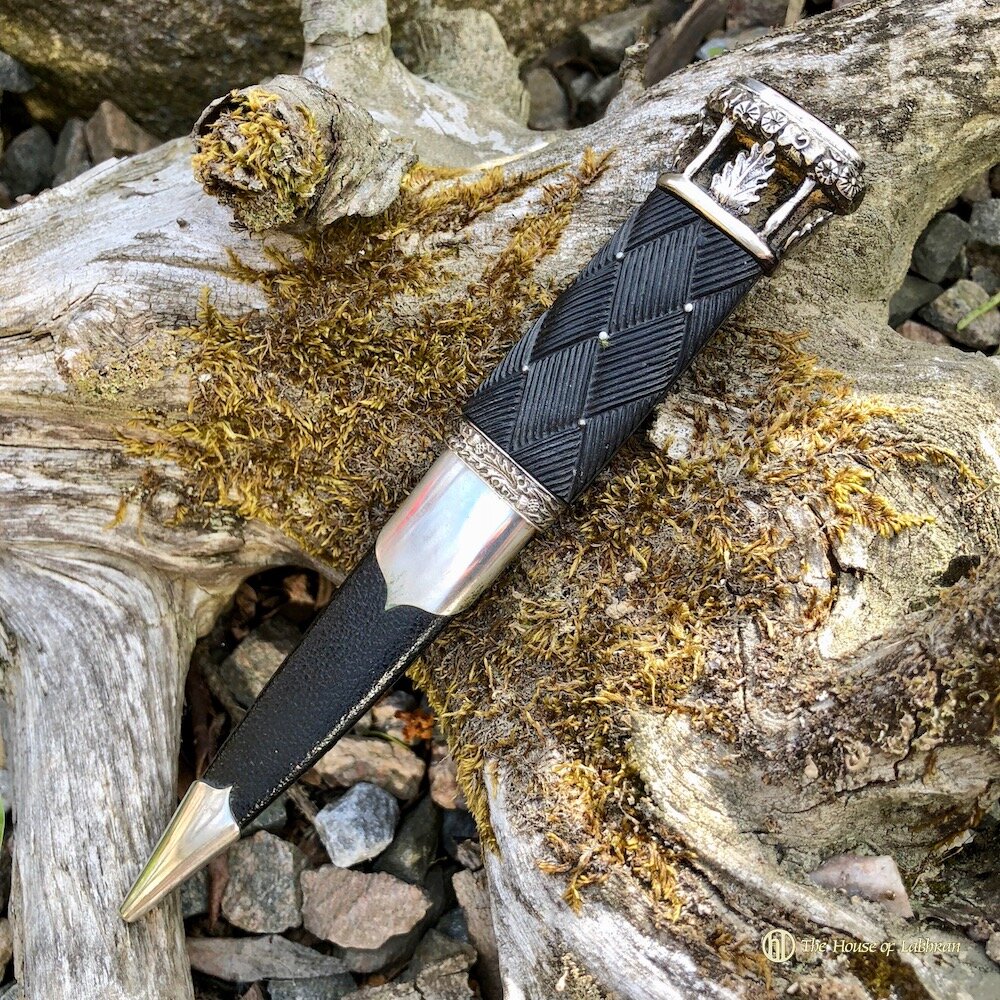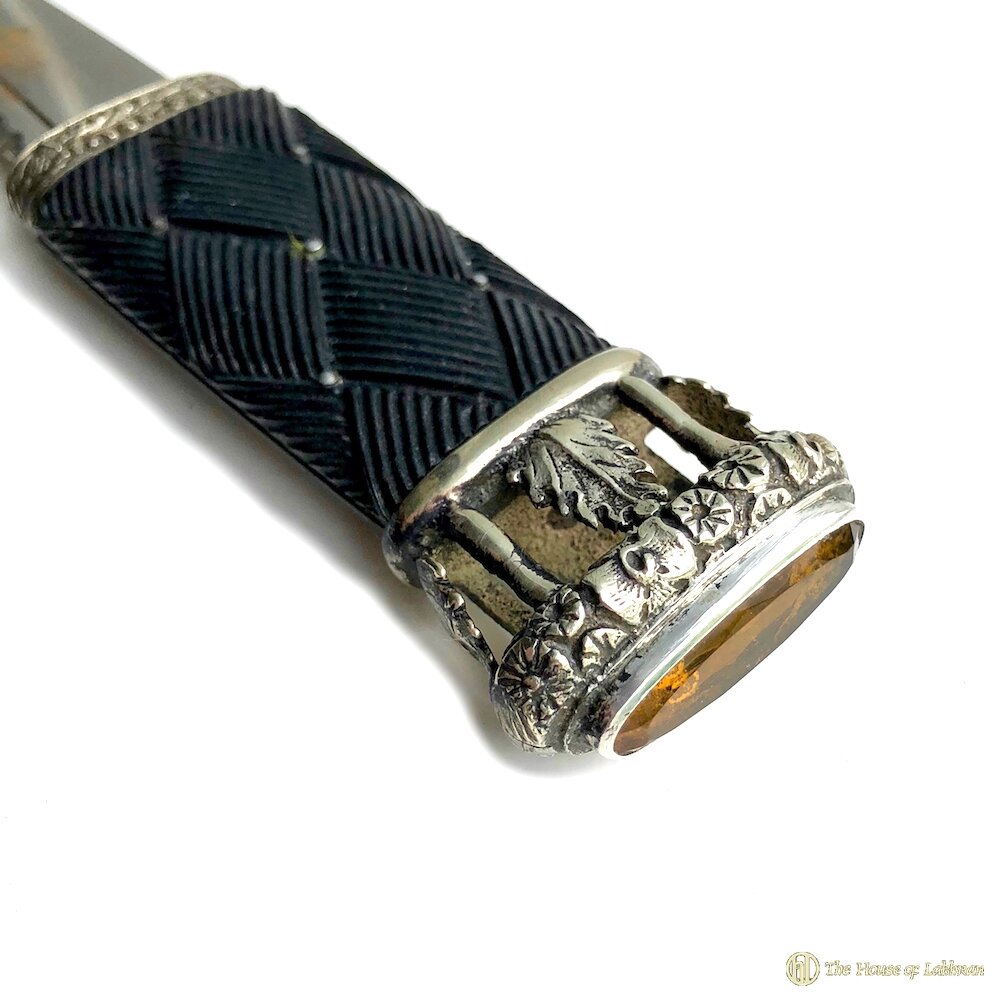Gordon Highlanders 1940's Vintage Sgian Dubh
Gordon Highlanders 1940's Vintage Sgian Dubh
A recent discovery unearthed a remarkable piece: a splendid Scottish Gordon Highlanders officers WW2 era regimental sgian dubh. This dagger features a black wood handle adorned with studs, complemented by the iconic Gordon's stone set mount on the hilt, exemplifying a rich heritage of tradition and style.
The Gordon Highlanders was a line infantry regiment of the British Army that existed for 113 years, from 1881 until 1994,The regiment was formed on 1 July 1881 instigated under the Childers Reforms.
The new two-battalion regiment was formed out of the 75th (Stirlingshire) Regiment of Foot—which became the 1st Battalion of the new regiment—and the 92nd (Gordon Highlanders) Regiment of Foot, which became the 2nd Battalion.
In 1994 it was amalgamated with the Queen's Own Highlanders (Seaforth and Camerons) to form the Highlanders (Seaforth, Gordons and Camerons). Today officers of the regiment still wear Gordon pattern sgian dubh's and dirks.We have a passion for fine antique and collectible sgian dubh’s and Highland dirks.
We source antique Jacobite styles of the 18th century, high Victorian styles and regimental patterns of WW1 – WW2. Our sgian dubh and dirk range make wonderful addition to any Highland dress collection.The Gaelic sgian dubh meaning “black knife”, where “black” may refer to the usual colour of the handle of the knife.
It is also suggested that “black” means secret, or hidden, as in the word blackmail. This is based on the stories and theories surrounding the knife’s origin and the meaning of “Dubh” in Gaelic, in particular those associated with the Highland custom of depositing weapons at the entrance to a house prior to entering as a guest. Despite this practice, a small twin edged-dagger, (‘Mattucashlass’), concealed under the armpit, combined with a smaller knife, (‘Sgian dubh’).




